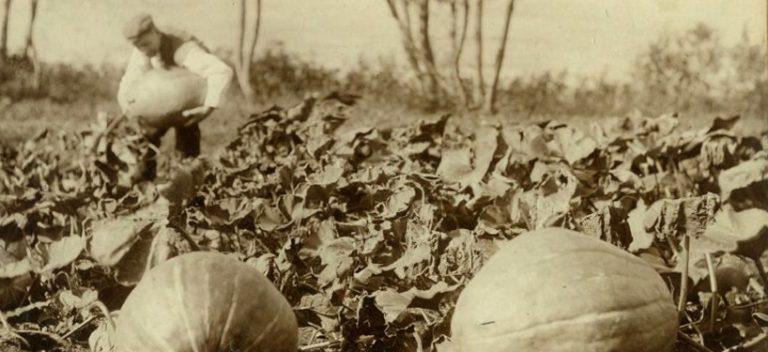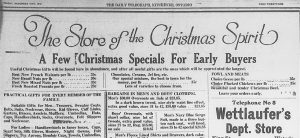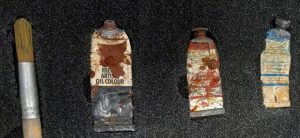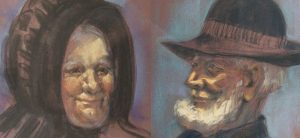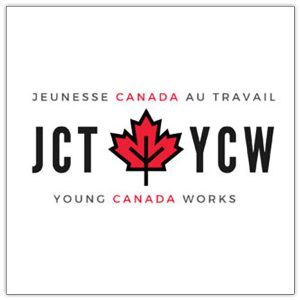When Doon was still a village and surrounded by farmland, the fall season meant the appearance of pumpkins in some of the nearby fields. The Watsons would have enjoyed pumpkins as a part of delicious meals, and it was also during their lifetimes that they began to evolve into an iconic symbol of Halloween.
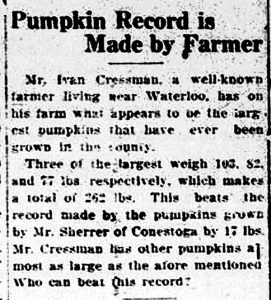
Roxa was known as a great cook. Included in her repertoire was a fall-favourite, pumpkin pie! During her and her husband’s travels to England, Roxa wanted to cook up this classic for a group of friends, but found she was missing what is probably the most crucial ingredient…pumpkin.
Homer and his wife were entertaining some artists at his studio in London, E.J. Gregory being one of the guests. His wife, having in mind the good, old-fashioned pumpkin pies of her native Canada, desired to treat her guests to some.
“But she had no pumpkin,” said Homer. “She used marshmallow.”
From Homer Watson: Artist and Man by Frank E. Page.
The “marshmallow” Homer’s referring to in this story is most likely vegetable marrow, not the fluffy white treat you may be thinking of. Vegetable marrow comes from the marrow squash, which comes from the same genus of plants as the pumpkin.
As pumpkins are native to the Americas, they weren’t introduced to European cuisine until around the 16th century. Though pumpkin pie became a popular pastry amongst North Americans, it didn’t quite reach the same level of fame with the English. Perhaps this is one of the reasons Roxa wasn’t able to find a pumpkin for her dessert.
It was throughout the mid-1800s that spooky pumpkin décor and Halloween itself was entering the scene as we know it today. Jack-o’lantern carving is one of several Halloween traditions that is believed to have been brought to Canada by Scottish and Irish immigrants around that time.
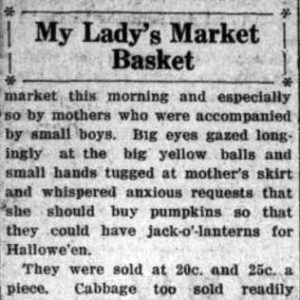
Pumpkins as ornamentation also meant their appearance at Halloween parties. This news article describes “witches, black cats, and pumpkins being used to decorate the Community Hall” in Hespeler.

During these last days leading up to the 31st, you’re more than likely to see plenty of pumpkins out and about your neighbourhoods. While the pumpkin-dotted farmers’ fields in Doon may be gone, many autumnal traditions and treats that the Watsons would have been familiar with are here to stay.
Happy Halloween!

